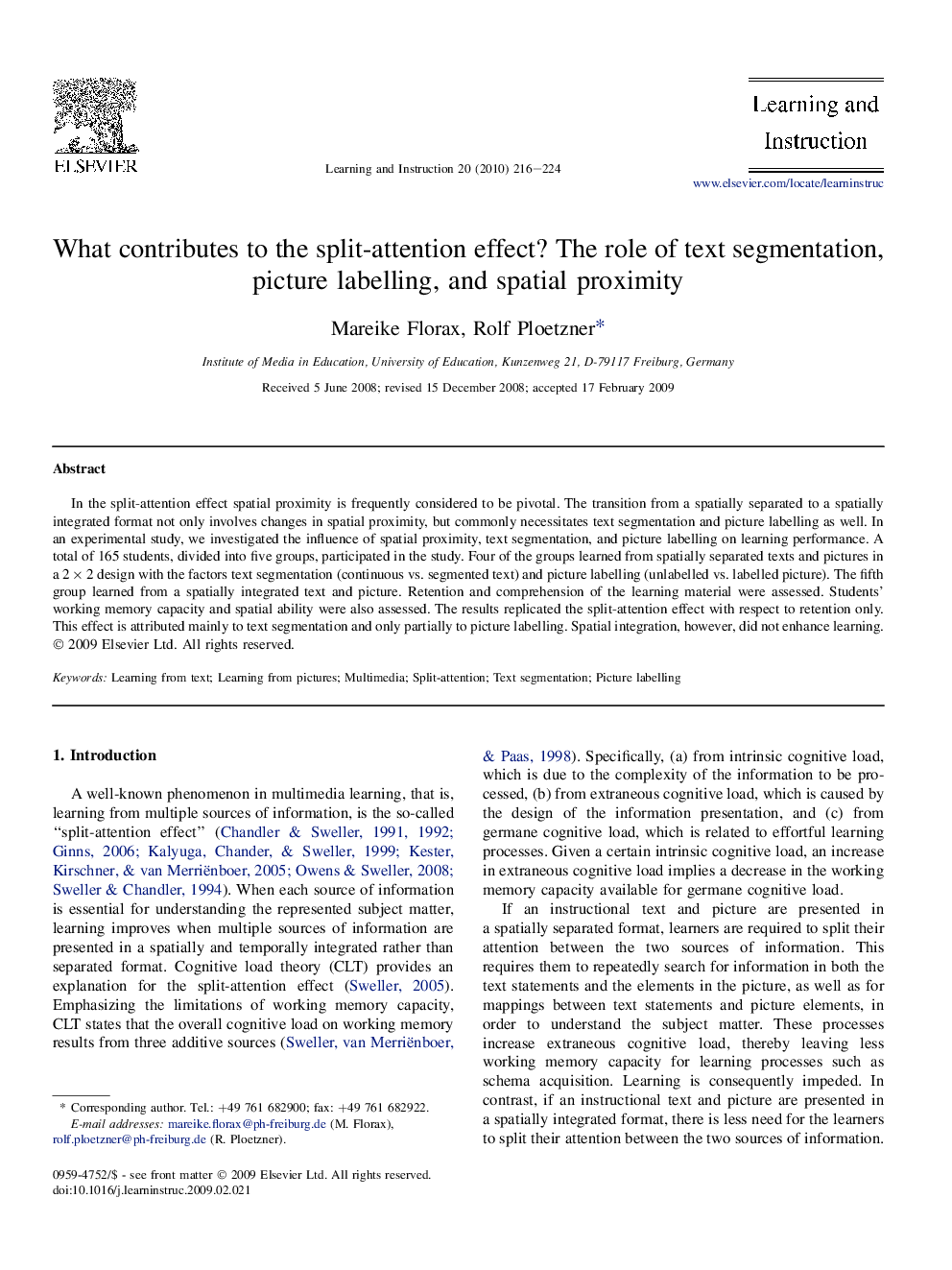| Article ID | Journal | Published Year | Pages | File Type |
|---|---|---|---|---|
| 365779 | Learning and Instruction | 2010 | 9 Pages |
In the split-attention effect spatial proximity is frequently considered to be pivotal. The transition from a spatially separated to a spatially integrated format not only involves changes in spatial proximity, but commonly necessitates text segmentation and picture labelling as well. In an experimental study, we investigated the influence of spatial proximity, text segmentation, and picture labelling on learning performance. A total of 165 students, divided into five groups, participated in the study. Four of the groups learned from spatially separated texts and pictures in a 2 × 2 design with the factors text segmentation (continuous vs. segmented text) and picture labelling (unlabelled vs. labelled picture). The fifth group learned from a spatially integrated text and picture. Retention and comprehension of the learning material were assessed. Students' working memory capacity and spatial ability were also assessed. The results replicated the split-attention effect with respect to retention only. This effect is attributed mainly to text segmentation and only partially to picture labelling. Spatial integration, however, did not enhance learning.
